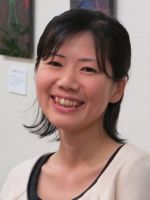TOP > Research > Cell Dynamics Research Core > Laboratory for Reconstitutive Developmental Biology


Unit Leader
Miki Ebisuya (Ph.D.)
![]()
In our lab, we strive to create or reconstitute biological mechanisms. Our aim of reconstitution is to test the sufficiency of current understandings of mechanisms of interest, as well as to discover unexplained or unexpected elements through observation. We are particularly focused on reconstituting mechanisms of intercellular communications. In metazoan development, for instance, intercellular communications induce the spontaneous differentiation of groups of cells underlying the cellular patterns seen in various tissues (known as self-organized cell differentiation patterns). We use simplified, artificial networks of the Delta-Notch pathway, which is responsible for signaling between adjacent cells, in an effort to reconstitute the essence of self-organized cell differentiation patterns in mammalian cells in vitro. Our ongoing projects also include the reconstitution of reaction-diffusion pattern formation, synchronized oscillation and tissue deformation. Artificially reconstituted systems also have the advantage of facilitating measurements and the modification of parameters, which we hope will contribute to the quantitative understanding of intercellular communications.
Research Topics
- Reconstitution of cell autonomous differentiation
- Reconstitution of cell pattern formation
- Reconstitution of tissue deformation
Selected Publications
-
Matsuda, M., Koga, M., Woltjen, K., Nishida, E. & Ebisuya, M.
"Synthetic lateral inhibition governs cell-type bifurcation with robust ratios"
Nat. Commun. 6, 6195 (2015) doi:10.1038/ncomms7195 -
Imajo, M., Ebisuya, M. & Nishida, E.
"Dual role of YAP and TAZ in renewal of the intestinal epithelium"
Nat. Cell Biol. 17, 7-19 (2015) doi:10.1038/ncb3084 -
Koga, M., Matsuda, M., Kawamura, T., Sogo, T., Shigeno, A., Nishida, E., et al.
"Foxd1 is a mediator and indicator of the cell reprogramming process"
Nat. Commun. 5, 3197 (2014) doi:10.1038/ncomms4197 -
Takashima, S., Hirose, M., Ogonuki, N., Ebisuya, M., Inoue, K., Kanatsu-Shinohara, M., et al.
"Regulation of pluripotency in male germline stem cells by Dmrt1"
Genes & Development 27, 1949-1958 (2013) doi:10.1101/gad.220194.113 -
Matsuda, M., Koga, M., Nishida, E. & Ebisuya, M.
"Synthetic Signal Propagation Through Direct Cell-Cell Interaction "
Sci. Signal. 5, ra31 (2012) doi:10.1126/scisignal.2002764 -
Matsumura, S., Hamasaki, M., Yamamoto, T., Ebisuya, M., Sato, M., Nishida, E., et al.
"ABL1 regulates spindle orientation in adherent cells and mammalian skin "
Nat. Commun. 3, 626 (2012) doi:10.1038/ncomms1634 -
Sunadome, K., Yamamoto, T., Ebisuya, M., Kondoh, K., Sehara-Fujisawa, A. & Nishida, E.
"ERK5 Regulates Muscle Cell Fusion through Klf Transcription Factors "
Dev. Cell 20, 192-205 (2011) doi:10.1016/j.devcel.2010.12.005 -
Mitsushima, M., Aoki, K., Ebisuya, M., Matsumura, S., Yamamoto, T., Matsuda, M., et al.
"Revolving movement of a dynamic cluster of actin filaments during mitosis "
J. Cell Biol. 191, 453-462 (2010) doi:10.1083/jcb.201007136 -
Ebisuya, M., Yamamoto, T., Nakajima, M. & Nishida, E.
"Ripples from neighbouring transcription "
Nat. Cell Biol. 10, 1106-1113 (2008) doi:10.1038/ncb1771 -
Yamamoto, T*., Ebisuya, M*., Ashida, F., Okamoto, K., Yonehara, S. & Nishida, E. (*Equal first authors)
"Continuous ERK activation downregulates anti proliferative genes throughout G1 phase to allow cell-cycle progression "
Current biology 16, 1171-1182 (2006) doi:10.1016/j.cub.2006.04.044
